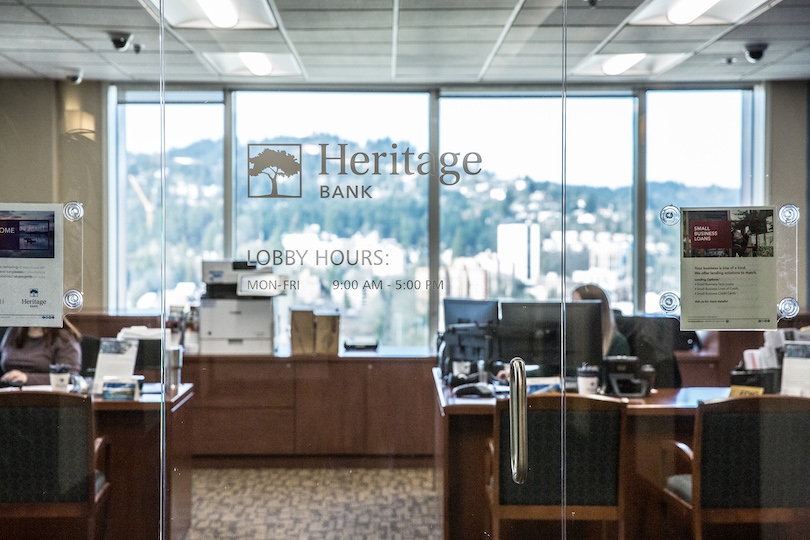Brand Story – Embracing the past has catalyzed Heritage Bank’s success.
Heritage Bank, a community bank serving Washington and Oregon, has grown from 36 to 64 branches since 2014. In that same span, employees have increased from 373 to more than 850 and assets have jumped from $1.7 billion to $5.3 billion. Yet even amidst this rapid growth, the bank takes an unconventional approach into how it incorporates each acquisition.
“[Heritage] management sees each newly acquired bank and team member as an opportunity to learn from what that person or place can bring,” says Emily Leach, Heritage’s senior vice president and commercial team leader in Portland. “It’s a total Jedi move, and the opposite of how bank acquisitions usually work. Yet it’s incredibly effective.”
Typically, banks ask newly acquired branches and employees to assimilate within a pre-existing culture—forgetting what they had done in the past and reorganizing departments and relationships as they see fit. Instead, Heritage makes sure relationships remain intact, and that the acquired person or branch can continue doing whatever was successful before. “That relationship is really the value that has been acquired,” says Leach. “Why would we change that?”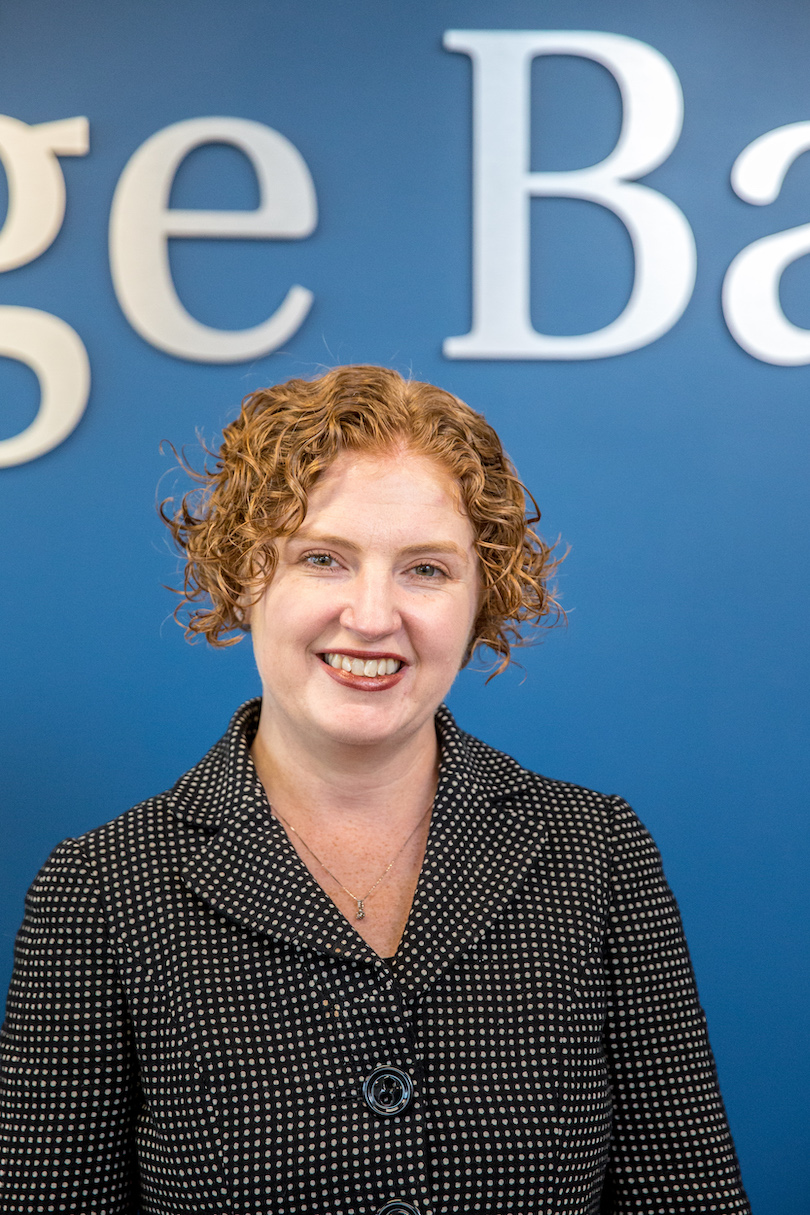 Emily Leach
Emily Leach
One of Heritage’s philosophies, after all, is “to honor what came before.” This extends beyond relationships and includes the individual differences of bankers, branches and clients. “If you have a different opinion, or something that makes you unique, we want to know that,” says Leach. “As both a bank and as a community, we’re made better by those differences.”
Heritage was founded in 1927 under the belief that “when banks and neighbors work together, the community grows stronger.” Heritage refers to itself not as a community bank, but a community of banks—leveraging resources and expertise across all branches to provide the best possible solutions for clients. Leach adds: “By being connected to the community in a vibrant and authentic way, we’re actually better able to fill the needs of our clients outside of just typical banking services.”
While Heritage’s identity may evolve based on what it acquires, one component remains the same: a commitment to creating deep and sustainable relationships.
Investing in relationships is nothing unique for community banks; it’s often why businesses choose them over regional or national competitors. Yet given the long-term nature of these relationships, the bank must choose its clients wisely.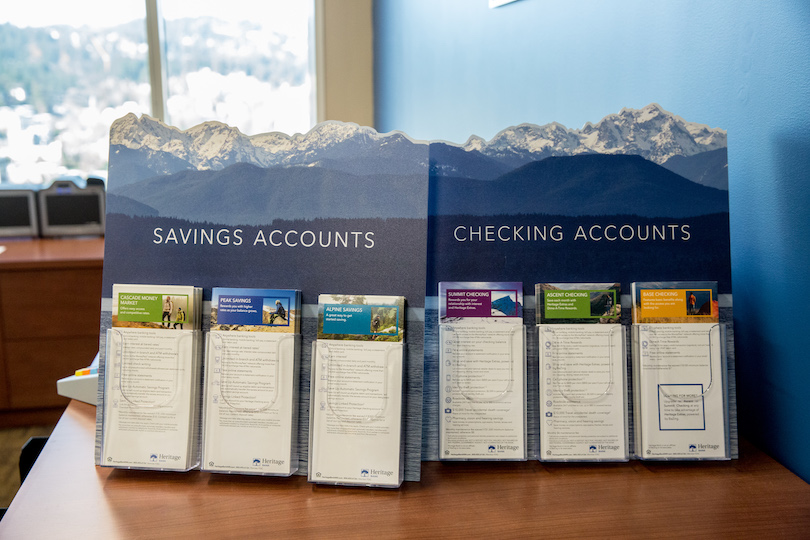
Heritage is drawn towards business owners with a clear-cut company vision—a firm understanding of who they serve and where they’re going. “If they believe in what they’re doing, it’s much easier for us to believe in what they’re doing,” says Leach.
Even further, the bank loves to see a business owner who views the company as his or her life’s work. “Passion is an engine you can trust,” she continues. “If it’s genuine, that passion won’t die.”
For example, one of Heritage’s longest relationships is with a plumbing parts manufacturer, a client for more than 15 years. The company owner’s office is filled with pictures of his customers, mementos from business trips and photographs of his family as they visited vendors together in Southeast Asia. Many of the employees have worked there for more than 20 years. “You can tell that there’s no line between business and family,” says Leach. “[That business owner] has an obvious pride in the company and you can tell that business is his life’s work. That’s something we can immediately latch onto.”
The most important element, says Leach, is partnering with clients who are doing good in the community and operating under a defined mission and purpose.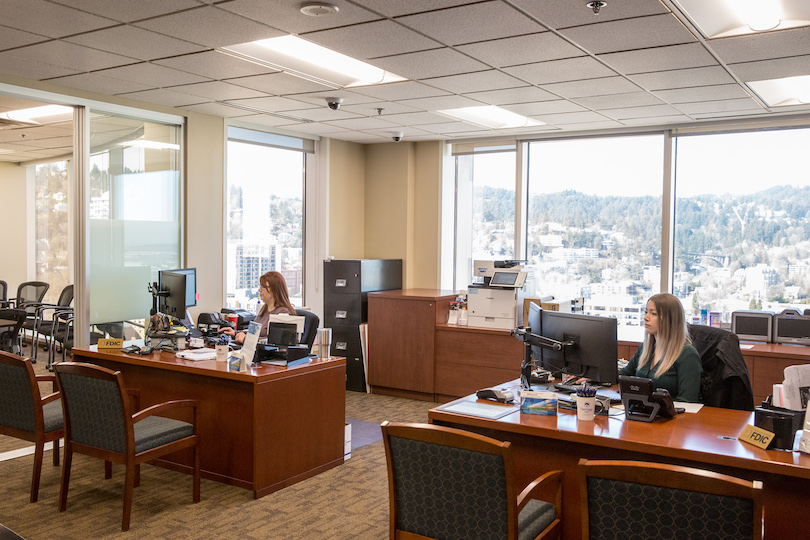 Heritage Bank’s downtown Portland offices.
Heritage Bank’s downtown Portland offices.
Finding the right client is one thing—keeping the client has different complexities. While there’s no clear-cut formula to long-term relationships, one guiding principle has helped Heritage succeed: a commitment to integrity—saying and doing what the bank feels is best for the client, even if it’s not what they want to hear in that moment.
Brandi Tuck, executive director of Portland Homeless Family Solutions (PHFS), can attest.
Heritage had been working with PHFS, a nonprofit organization that empowers homeless families and children to find and remain in permanent housing, for more than eight years.
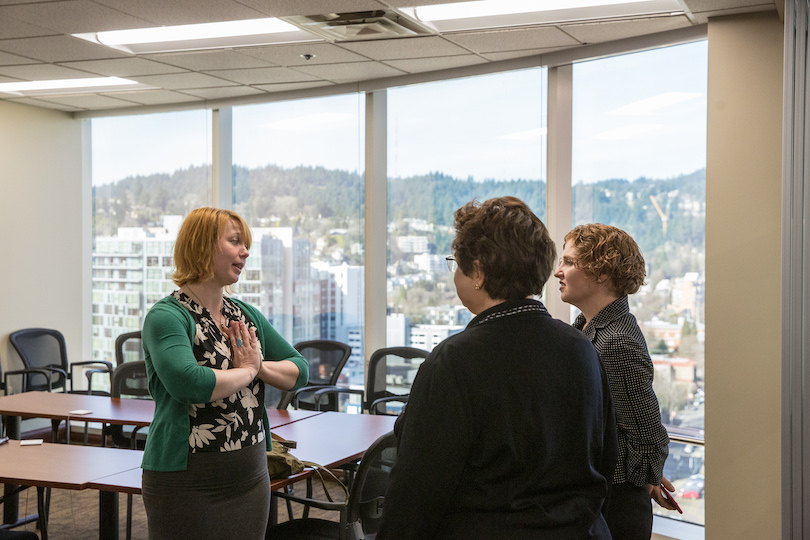 Brandi Tuck speaks with Kathleen Swift and Emily Leach.
Brandi Tuck speaks with Kathleen Swift and Emily Leach.
In 2017 PHFS had a dream they called “The Moonshot”—buying a property to finally offer their services from a permanent location (previously it had operated out of churches around the city). The Moonshot was exciting and ambitious, yet would take 10 years to fulfill.
One year in, however, Tuck found her dream property. She was in love, but it was nine years too early—PHFS didn’t have anywhere close to the necessary funds to purchase.
Tuck approached her team at Heritage and asked for a multimillion dollar loan. The bank examined PHFS’s financial reports and knew that by granting this loan, although it’d fulfill the dream of buying that property, would significantly cripple the organization in the long run. Difficult as it was, the bank declined that initial amount, instead offering a lower, more feasible loan.
“I was pretty grumbly when I heard ‘no’,” says Tuck. She and a PHFS board member pleaded the bank to reconsider. “[Heritage] knew how eager we were and they listened patiently the entire time. But they didn’t budge.”
Instead, Heritage offered to help PHFS raise the requisite money.
Kathy Swift, a Heritage team member who’d been doing nonprofit transactions for more than 10 years, connected PHFS with high net-worth individuals who were concerned with similar causes. The bank directed PHFS to other sources of fundraising and invited them to relevant events that would help raise more money.
Within five months, PHFS raised $2 million—the sufficient amount to buy the property.
“When [Heritage] declined that loan, they knew it wasn’t what we wanted to hear,” says Tuck. “But we recognize they’d guided us in the right direction. It was absolutely the right thing for us.”
“It showed me that Heritage truly loves its community,” Tuck adds. “And they absolutely want to be a part of improving it.”
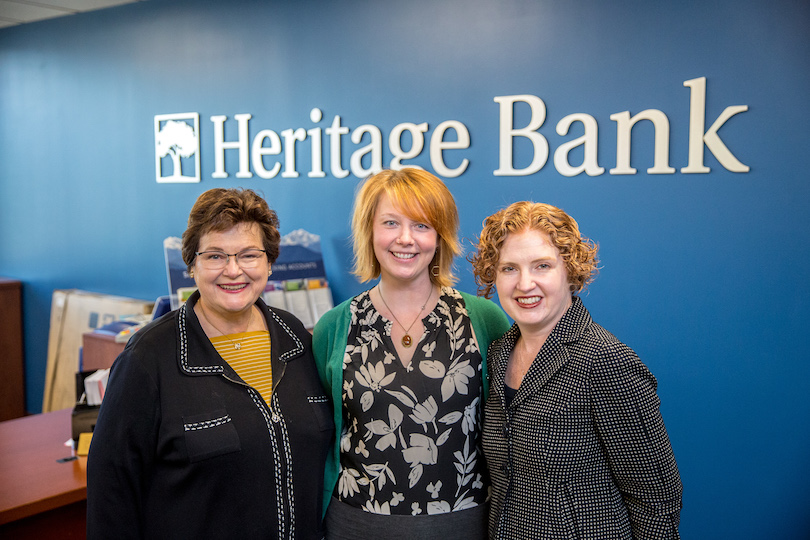 Kathleen Swift, Brandi Tuck and Emily Leach.
Kathleen Swift, Brandi Tuck and Emily Leach.
Ultimately, every community bank cares about its relationships. Yet it’s how deeply each bank can invest into these relationships which truly sets them apart. And most of all, Heritage understands that the more it expends into its relationships and community, the more everyone benefits.
“Community is simply a collection of relationships where both parties are changed for the better,” says Leach. “Certainly we want to grow and find new clients. But our main goals are finding the right fit and learning from each other. That’s how everyone prospers.”
Brand stories are paid content articles that allow Oregon Business advertisers to share news about their organizations and engage with readers on business and public policy issues. The stories are produced in house by the Oregon Business marketing department. For more information, contact associate publisher Courtney Kutzman.


